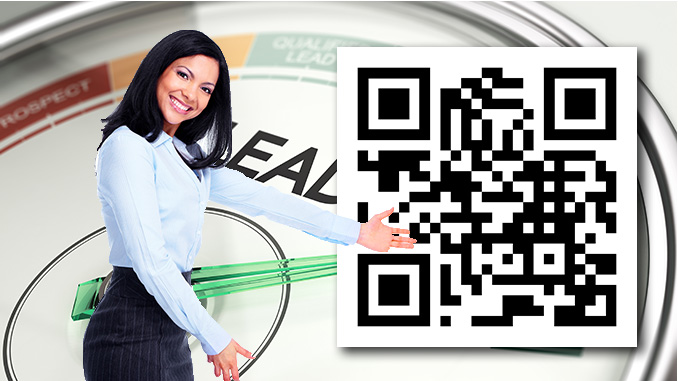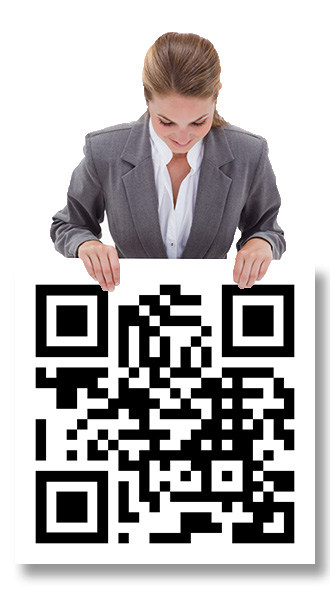
A QR code, or Quick Response code, is a two-dimensional barcode that can store various types of information. It was first developed in 1994 by a Japanese company called Denso Wave. QR codes consist of black squares arranged on a white square grid, and they can be scanned using a QR code reader, which is often a feature built into smartphones or dedicated QR code scanners.
QR codes can store different types of data, such as alphanumeric characters, numeric data, binary, and even Kanji characters. They are commonly used to encode information like website URLs, contact information, product details, and more. When a QR code is scanned, the encoded information is quickly extracted, allowing users to access the associated content or perform a specific action.
QR codes are widely used for various purposes, including:
- Website links: QR codes can encode URLs, allowing users to quickly access a website by scanning the code with their smartphone.
- Contact information: Business cards may include QR codes that encode contact details, making it easy for others to save the information to their phones.
- Wi-Fi network setup: QR codes can store Wi-Fi network credentials, simplifying the process of connecting to a wireless network.
- Payments: Some mobile payment systems use QR codes for transactions. Users can scan a merchant’s QR code to initiate a payment.
- Boarding passes and event tickets: Airlines and event organizers often use QR codes on boarding passes and tickets for quick and efficient entry.

- Product information: QR codes on product packaging can link to additional information, user manuals, or promotional content.
QR codes have become a ubiquitous and versatile tool for conveying information quickly and efficiently in a wide range of applications.
Factoring Brokers: Using QR Codes For Your Marketing
Factoring brokers can leverage QR codes in various ways for marketing on direct mailers, social posts, door hangers, and other promotional materials. Here are some ideas:
Direct Mailers:
- Quick Access to Information: Include a QR code on the direct mailer that leads to a landing page with detailed information about your factoring services. This can include the benefits of factoring, the application process, and client testimonials.
- Promotional Offers: Create QR codes linked to special promotions or discounts. When scanned, clients can be directed to a page with exclusive offers for those who received the direct mailer.
- Contact Information: Instead of cluttering the mailer with contact details, use a QR code that, when scanned, opens a contact form or provides direct access to your contact information.
Social Media Posts:
- Engagement Campaigns: Generate QR codes for engagement campaigns on social media. For example, create a QR code that leads to a social media post with a call to action, such as sharing the post for a chance to win a prize.
- Event Promotion: If you’re hosting webinars, workshops, or other events, use QR codes to direct followers to event details or registration pages.
Door Hangers and Mail Stuffer:
- Localized Information: Tailor QR codes on door hangers to provide localized information, such as specific benefits for businesses in that area or testimonials from local clients.
- Instant Contact: Include a QR code that, when scanned, opens a page where potential clients can easily contact you for more information or schedule a consultation.
Business Cards:
- Digital Business Card: Instead of a traditional business card, create a digital business card with a QR code linking to your website or LinkedIn profile. This can be particularly useful if you have a lot of information to share.
Print Advertisements:
- Video Content: Use QR codes to link to video content that provides an engaging and informative overview of your factoring services. This can be a powerful way to communicate your value proposition.
QR codes offer a cost-effective and accessible enhancement to any marketing campaign. Their simplicity and versatility make them a valuable tool for factoring brokers looking to streamline engagement with potential clients. One of the key advantages is their cost-effectiveness, as QR codes can be generated and incorporated into promotional materials without incurring additional expenses. Furthermore, their compatibility with smartphone technology ensures easy access for prospects, who can effortlessly scan the codes using their cell phones. This seamless integration not only enhances user convenience but also facilitates quick engagement with the promoted content. Whether included in direct mailers, social media posts, or other marketing collateral, QR codes serve as a bridge between traditional advertising channels and the digital realm, offering a straightforward means for prospects to access relevant information or take immediate actions, ultimately contributing to a more efficient and responsive marketing strategy.
Where to Create QR Code
You can track the performance of your QR codes using analytics tools. This will help you understand which marketing channels are most effective and refine your strategies accordingly. Additionally, ensure that the landing pages or content linked to the QR codes are mobile-friendly to provide a seamless user experience. Here are several websites where you can create free QR codes for your phone numbers and website addresses:




